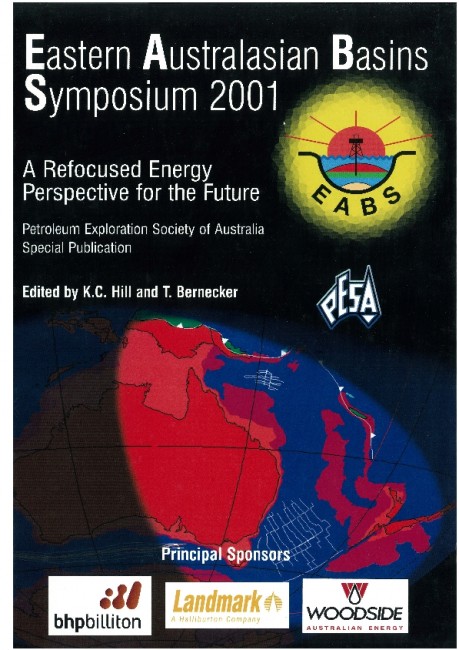Publication Name: Eastern Australian Basins Symposium 2001
Authors: R. Sykes
Date Published: November 2001
Number of Pages: 34
Reference Type: Magazine Article
Abstract:
Integrated assessment of the Rock-Eval and coal chemical properties of Late Cretaceous-Tertiary coaly sediments in the Taranaki Basin, New Zealand, has revealed complex stratigraphic variations in bulk petroleumpotential and provided insights of their origins. Using the Suggate rank scale, significant oil generation commences at Rank(S,) -9 - 10 (R0 -0.55-0.6%, Rock-Eva! Tmax -420 - 430?C) and expulsion of oil at
Rank(S.-) -11 - 12.5 (R0 -0.65-0.85%, Tmax -430- 440?C). The indicated rank ranges for the generation and expulsion thresholds are probably the result of variation in kerogen type. The coaly sediments comprise three primary lithologies - carbonaceous (coaly) mudstone, shaly coal and coal -each containing mixed gas- and oil-prone, Type III kerogen. The three lithologies form a continuum of source rocks characterised by increasing TOC and S 1 +52, from carbonaceous mudstone to coal, as a result of decreasing clastic influx. All coals, shaly coals, and arbonaceous mudstones with >-3% TOC constitute good potential sources of gas and oil and should be included in source rock assessments. Their generative potential and oil-proneness are additionally influenced by brackish conditions within most of the coal measure formations. Strongly marine-influenced coaly sediments typically have greater S 1 +52 and HI values than less marine-influenced to fully terrestrial lithologies of equivalent TOC and rank.
Though generative potential and oil-proneness are initially controlled by depositional factors, measured values of S 1 +52 and HI are also strongly affected by rank. QI ([S 1 +52]/TOC) and HI display pronounced increases from immature coals to equivalent-type coals near the onset of oil expulsion. These increases are attributed mainly to structural rearrangement of the coal macromolecular matrix during diagenesis and catagenesis. As a consequence, the generative potential and oil-proneness of immature Taranaki Basin coals are underestimated by S l +52 and HI, and for modelling purposes, these values need to be adjusted (upwards) to corresponding values near the onset of oil expulsion. A graphical method of adjustment is presented. The identified major causes of stratigraphic variations in the petroleum potential of Taranaki coaly sediments - clastic influx, synsedimentary marine influence, and structural rearrangement of kerogen - are fundamental processes
common to many basins of eastern Australasia. The challenge remains to establish their full implications for kerogen kinetics and gas:oil ratios, and to incorporate into basin models the stratigraphic variations in source
rock properties that have significant impact on the timing, volumes and products of hydrocarbon generation and expulsion.


